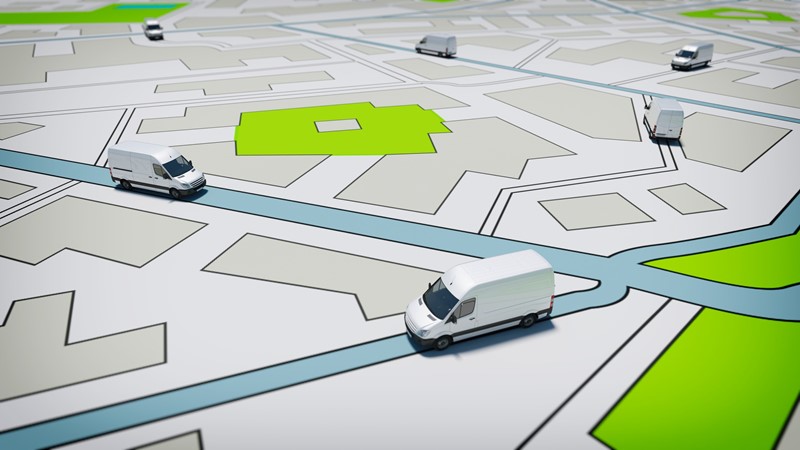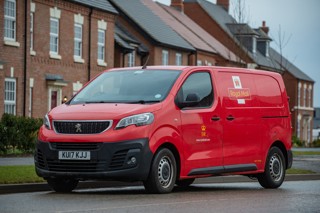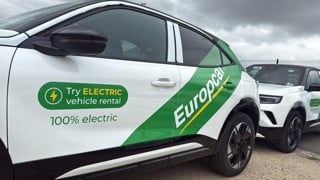Demand for home delivery services has been growing for a number of years and the coronavirus pandemic has played a significant part in accelerating the trend.
A report from ParcelHero in 2017 predicted that online shopping would account for around 40% of all UK retail by 2030. The latest Office for National Statistics figures show online sales had already reached 34.2% of the entire UK retail spend in January.
As e-commerce becomes more popular, the pressure is on fleets and delivery companies to ensure goods arrive in a timely, cost-effective manner, with minimal environmental impact.
We’ve outlined nine ways you can ensure your delivery fleet is fit for purpose.
1 Choose the right vehicles
While a vehicle’s load volume and payload figures dictate what it can carry, you also need to consider the practical elements.
A fully-loaded truck can carry the same cargo as approximately three panel vans; but larger vehicles burn more fuel, cost more to buy and are more difficult to manoeuvre and park, which makes them impractical in some urban settings.
Vans are more flexible. They can deliver a large quantity of items in a smaller timeframe and have simpler licencing requirements.
Some towns and cities require an even more innovative approach, however, which is why e-cargo bikes are growing in popularity. They don’t offer the same speed or ability to cover long distances as a van, but they help to combat congestion and air pollution in the last mile. They are suited to operators who can transport goods to an urban hub and then swap them to e-cargo bikes for the final mile.
The main users of e-cargo bikes are parcel and post logistics companies, but an increasingly diverse range of businesses is exploring their use.
Supermarkets, including Co-op and Sainsbury’s, have trialled them for home deliveries, while Yodel has expanded its urban bicycle delivery offering, operating in seven cities across the UK including London and Oxford. In 2020, the business delivered 150,000 parcels via pedal power and has set a new goal of doubling that amount in 2021.
2 Fuel type
Picking the right size of vehicle is only part of the challenge as more businesses are under pressure to decarbonise and operate zero-emission vehicles.
A survey by EO Charging found that three-quarters of UK adults would prefer to buy products from companies that deliver them in an environmentally-friendly manner and 72% would be likely to use a green delivery option if one was available.
One delivery fleet that is embarking on a transition to electric is DPD. It plans to cut final-mile emissions by 89% in 25 UK locations by 2025, using low- and zero-emission vehicles in place of diesel models.
Van fleets wanting to adopt electric vehicles have been hampered by both a lack of models and limited supply, however.
This situation is improving, but making the switch still requires significant upfront investment. Not only are electric vans considerably more expensive – although total cost of ownership is becoming competitive – many operators require the implementation of charging infrastructure either at depots or drivers’ homes.
There’s also the issue of range.
Fleets may have to adjust routes and schedules and take into consideration electric vans that can travel further between charges require heavier and more expensive batteries.
The results are often rewarding, with lower wholelife costs, less downtime for maintenance and improved environmental credentials.
The John Lewis Partnership is introducing electric vehicles for its Waitrose.com food deliveries and for smaller John Lewis deliveries. The partnership is expected to make savings of more than 20,000 tonnes of CO2 per year.
3 Minimise vehicle downtime
Keeping your delivery vehicles moving is essential to an efficient operation and it requires two key elements of focus: a proactive approach to service, maintenance and repair (SMR) and a robust set of processes for dealing with breakdowns and collisions.
Chevin says the upfront cost of routine maintenance tends to be significantly less than that associated with any unscheduled downtime and fleet vehicles in a preventative fleet main-tenance programme were shown to experience about 20% fewer SMR-related downtime days.
Fleet management software can help to plan and track the SMR of vehicles in line with requirements, while also capturing data from defect checks and flagging potential failures before they happen.
While the delivery sector is currently buoyant, consumer and customer demand will fluctuate, so fleets should also consider marketing and advertising their services to maintain longer-term contract levels during seasonal fluctuations.
“Long-term suitability of vehicles is also important – trucks, vans and cars which require more maintenance will result in more unplanned downtime. Sometimes it is more financially prudent to plan ahead and invest in newer equipment to avoid this,” says Fleet Operator Recognition Scheme (FORS) business services manager Paul Wilkes.
If vehicles do crash or breakdown, then access to replacements should be readily available to minimise disruption. This can be achieved by keeping spare vehicles on hand or by using rental.
Vehicle movement also plays a critical role in maximising utilisation. Vehicles need to be in the right place at the right time at short notice to reflect demand.
Calum Slowther, commercial director at vehicle movement specialist Engineius, says: “A good vehicle movement solution allows delivery companies to store their fleet at fewer operating sites and move vehicles more freely between them.”
4 Prepare for seasonal trends
The challenge – pandemic or not – is knowing how many and what kind of vehicles will be needed from month to month. Fluctuating customer demand is a fact of life for the majority of businesses, but for those running delivery fleets, the almost overnight explosion of customers wanting to use delivery services due to lockdown meant they had to find extra vehicles quickly to meet demand.
This is where the concept of ‘usership’ rather than ‘ownership’ of vehicles comes into its own.
“Long-term rental solutions in the commercial vehicle sector can offer that extra layer of agility to company operations, that outright purchase or being tied into inflexible lease arrangements cannot,” explains Stuart Russell, LCV sales director at Europcar Vans & Trucks.
Flexible long-term rental addresses the problem of changes in demand by providing access to a range of up-to-date vehicles, but without the need for a long-term financial commitment.
When choosing a supplier look for one that can provide a comprehensive range of new or nearly new light commercial vehicles which are Euro VI-compliant and comply with clean air zones. Check that they offer other services – delivery and collection and a verified hygiene safety service, for example.
5 Optimise routes
Route optimisation uses computer software to calculate the most efficient way for an organisation to complete its daily vehicle tasks. The algorithms make these calculations in a fraction of the time it would take a team of people.
Colin Ferguson, co-founder of route optimisation specialist The Algorithm People, says: “Our research indicates that only about 5% of fleets are using optimisation. This means that a significant amount of organisations are operating at a commercial disadvantage, because they are not realising the efficiency and cost-saving benefits.”
There are very clear parallels with route optimisation and the development of the vehicle tracking market. Initially, telematics was only viable for the biggest fleets as it was quite expensive to install and complex to use. As the costs came down and the technology became more user-friendly, it opened up the market to the small- and medium-sized vehicle operators.
“Route optimisation is so well embedded in the big players that, today, they couldn’t envisage operating without it,” Ferguson added. “Our strategy is to make it cost-effective and user-friendly enough for the rest of the market, so it becomes an essential tool for them in their fight to cut emissions and costs.”
Total fleet mileage can be reduced by up to 20% with effective route optimisation. It can also cut total transport costs by up to 30%.
“Urban routes are more congested than ever, and urban deliveries demand a lot from fleets. Delivery fleets that understand how to optimise routes reap the benefits in their bottom line. Optimised routes help drivers complete drop-offs and pick-ups as efficiently as possible, not only reducing fuel use but also helping to lower emissions,” adds FORS’s Wilkes.
6 Improve risk management/compliance
For delivery fleets, managing risk can seem like a huge and impossible task. The global pandemic has led to a shift in how and when roads are used, with less concentration of traffic in ‘rush hour’ times and more pedestrians and cyclists on the road at unpredictable times throughout the day.
According to FORS, for this risk to be successfully managed, it must be considered across all operational tasks, from vehicle safety checks, tyre safety and maintenance, correct and secure loading, and even security and counter terrorism.
Wilkes says: “For last-mile delivery fleets, risk management should focus in the first instance on improving safety for drivers and vulnerable road users sharing the road. Unlike HGV drivers, car and LCV drivers are not subject to the same periodic safety training requirements in order to drive on UK roads, a fact which, in itself, significantly increases risk.”
Fleet operators should implement a robust licence checking policy, which can be enhanced with e-learning modules and on-road assessments.
Telematics systems can also be used to encourage safer driving styles by monitoring the driver’s acceleration, speed, turning and braking patterns.
Royal Mail is installing Trimble telemetry technology to 11,000 existing small vans and says all new collection and delivery vans bought will contain some form of telemetry.
James Baker, chief engineer and fleet director at Royal Mail, says: “The widescale expansion of telemetry in our fleet enables us to ensure our drivers are given positive feedback and training on how to drive in the safest and most environmentally-conscious way possible, while allowing us to continue to deliver letters and parcels safely, efficiently and responsibly.”
7 Be aware of new technologies
Drones are expected to revolutionise the logistics industry, replacing vehicle fleets and drivers with self-driving (or flying) delivery robots.
Amazon was given approval by the Federal Aviation Administration to operate its fleet of Prime Air delivery drones in the US, and, although the online retail giant isn’t ready to immediately deploy package deliveries at scale, it will use this permission to develop and refine its technology to integrate drones into the airspace.
The experiences of its testing will have huge implications for the use of drones around the globe. As well as the convenience – Amazon has said it wants to use the technology to make deliveries within 30 minutes – this will also bring environmental benefits.
Richard Gill, founder and chief executive officer of Drone Defence, says: “In the UK, 3.5 billion packages weighing less than 2kg are delivered every year, which is 25% of the whole of Europe’s e-commerce.
“If half of these parcels got delivered by a drone this would mean 16,000 vehicles would be taken off the roads, one billion road miles – around 5% of our current level – will be cut and 250,000 tonnes of CO2 will be saved, which, obviously, solidifies a potential use case.”
8 Manage driver well-being
Stress and fatigue are both major factors in the mental well-being of a driver and if this is poor, then it can have a significant affect on their performance as well as their health.
Possible sources of stress for delivery drivers are unrealistic schedules, congestion and the behaviour of other drivers.
It can also be caused by a poor work/life balance, domestic/personal issues,poor work organisation and job demands.
Stress can impair sleep quality, which increases the likelihood of fatigue, which, in turn, can heighten feelings of stress.
It is vital that any mental well-being problems are identified so an employee can get the help they need to manage their symptoms, and reduce the risk to themselves and other road users.
9 Use the right technology
Good customer service is about more than just delivering goods; consumers and businesses expect greater visibility of their shipment with accurate arrival estimates and real-time tracking.
Vehicles with existing telematics can be easily integrated with tracking systems, but companies can also use mobile devices such as smartphones or PDAs to monitor the location of their drivers.
Webfleet Solutions’ platform enables operators to share shipment information across different means of transport via open APIs. In this way, the delivery process can be seamlessly traced.
“Often not all vehicles and means of transport involved in the supply chain are already connected,” said Taco van der Leij, vice-president at Webfleet Solutions Europe. “And even if they are, this data is only visible to the owner and can only be used in the direct context of the delivery. Shipment information and telematics data still come together too rarely.”
Case Study: CitySprint

Courier firm CitySprint has witnessed a shift in the make-up of its offering in the past year with a huge uplift in support for healthcare deliveries, from PPE to Covid-19 testing, overflow support for businesses that are part of the vaccine distribution supply chain and even items to set up the Nightingale Hospitals.
While there was previously a high demand for long wheelbase vehicles, the landscape has changed during the pandemic and the need for small vans has grown through the increased demand for healthcare logistics.
The company performs around 80,000 deliveries per week using approximately 3,600 self-employed drivers. On average, it onboards around 25% more couriers each year and, as part of this growth, it has expanded its green fleet – particularly cargo bikes and electric vans.
Mark Footman, chief operating officer at CitySprint, says: “We recognise that climate change and sustainability are increasingly high on the agenda. To reduce emissions – both in London and other urban areas across the UK – while also operating effectively, we have invested in our green fleet.”
The company has the largest courier pushbike fleet in London with more than 100 bikes. They completed 184,327 jobs in 2019, saving more than 258 tonnes of CO2 emissions.
“Our green fleet is expanding rapidly this year as we support the roll-out of new clean air zones and the extension of the Ultra-Low Emission Zone. Our new Birmingham site has e-van charging fitted to support a growing green fleet also,” Footman adds.
CitySprint uses Salesforce to ensure its operations are run in a way that is resilient and robust. Job information is located instantly, as are courier updates and tracking — all connected to the courier app and its operating platform. This ensures it can best support couriers to get the job done.
Footman says: “We also launched an eLearning portal to increase the accreditation levels of couriers, particularly to support the extra demand in healthcare services. This also benefited our couriers, who were able to boost their earnings by increasing the number of jobs they could accept.”






















Login to comment
Comments
No comments have been made yet.